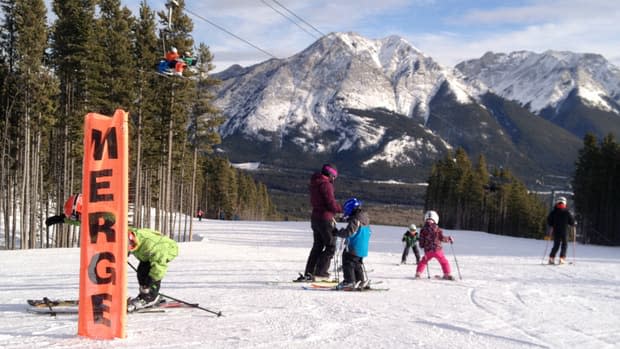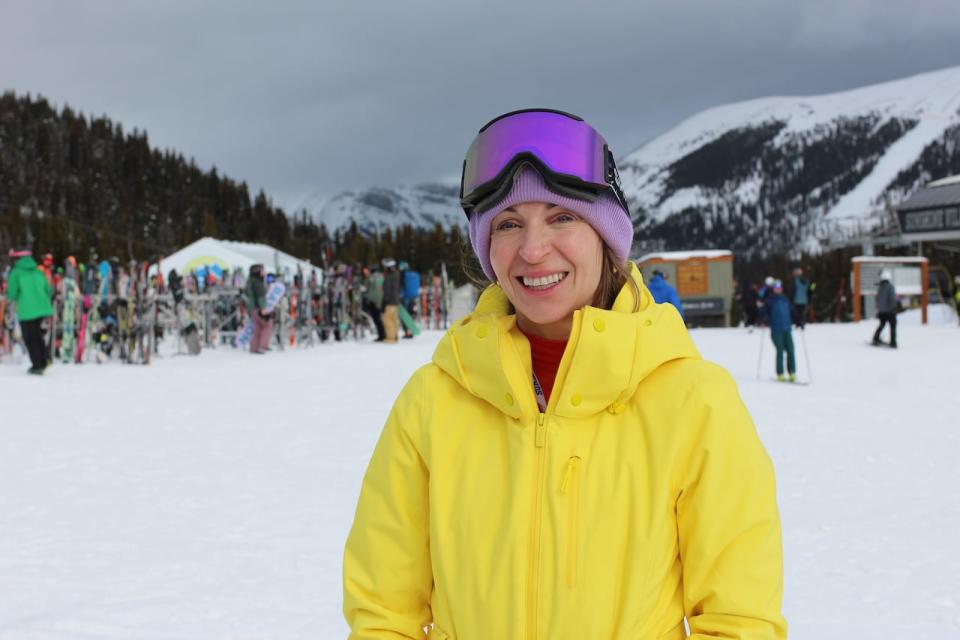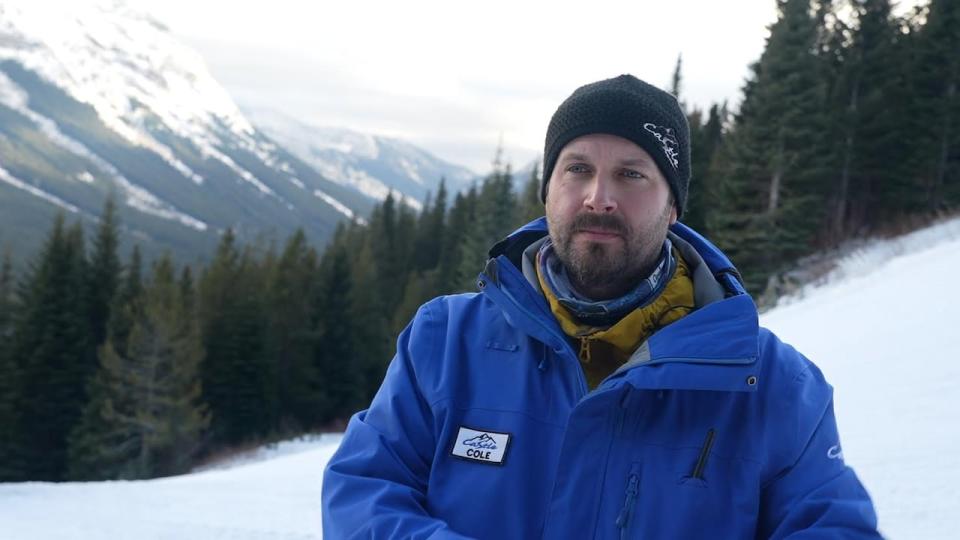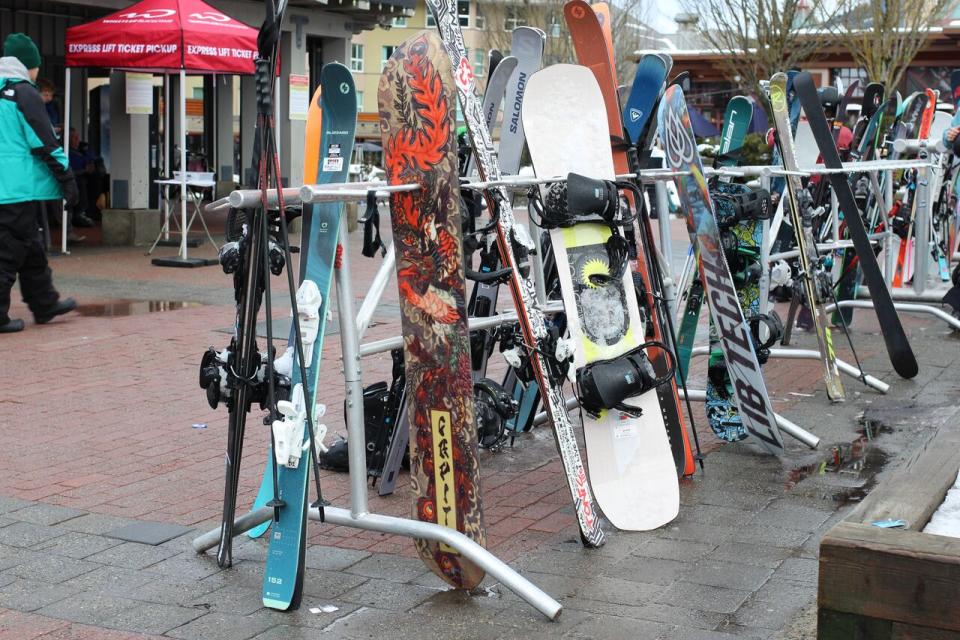Alberta ski hill operators reflect on a rollercoaster season that started slow but turned out OK

Alberta's ski hills have all hit the final run for the season, and after dry spells, spring flurries and everything in between, officials say it was a good year, despite a rocky start.
Most hills open in November and December, for those looking to get early turns in. But the prime powder season often doesn't materialize until March, with spring skiing lasting until April and May. While many operators contended with a dry and warm start to the year, mother nature turned the tables in the spring, which helped the slope business recover.
The last hill open in the province is typically Banff Sunshine Village — holding out for the hill's annual wrap-up event on May long weekend.
Kendra Scurfield, vice president of communications and brand marketing for the hill, says their base snow peaked this month, making for healthy spring conditions.
"It was a bit of a drier start to the season, but we did catch up to the lower end of the average and it was nice to see how much snow really did accumulate in April and May," she said. "So we had some of our best conditions really late this season."

Kendra Scurfield of Banff Sunshine Village said she believes it's important to continue targeting new skiers as part of the resort's business model. (Paula Duhatschek/CBC)
She said the snow was still coming down on Sunday, as skiers and snowboarders got their final turns in and hit up the Slush Cup competition.
The hill was able to close out the year with an average visitation rate, Scurfield said, as guests levelled out over the spring, a story that's common among Alberta's ski resorts this season.
Castle Mountain Resort, located in the Crowsnest Pass area, has had a bit of a wild ride.
Sales and marketing manager Cole Fawcett said visitation was about half what the resort expected in December and January.
He hates to mention rain, but said that was a reality early-on.
"We had below average precipitation early in the season and then when it did come, it was often not snow or it was mixed precipitation, you know, like rain at lower elevations but maybe snow up high," he said.

Cole Fawcett is the sales and marketing manager at Castle Mountain Resort. (Ose Irete/CBC)
Snow making, Fawcett says, really saved the season.
Castle invested in snow-making machinery back in 2019, and thanks to some 2020 upgrades, was able to extend the ski season by a number of weeks. Fawcett says it helped them avoid a season like 2014, when operations had to be cut short after just 60 days of skiing because of a similar early-season snow drought.
"They did exactly what we wanted them to do this year, which was keep the business viable and bring us through the lean times."
By March, snow and cooler temperatures brought more visitors which, according to Fawcett, "saved our bacon."
Weather isn't the only factor for this type of recreation though; economics can also play a part. Resorts of the Canadian Rockies, the group that operates the Nakiska Ski Area, has seen families choose season's passes over big overseas vacations.

Skis and snowboards are pictured in Whistler, B.C. (Paula Duhatschek/CBC)
Spokesperson Matt Mosteller thinks despite the cost of living crisis, people are choosing to strap on snowboards and skis because there's value there. It can be cheaper than a destination holiday, and he thinks people really value mountain time for its mental and physical health benefits.
"We're seeing much more growth in the sport," Mosteller said.
According to Environment and Climate Change Canada, Southern Alberta experienced average winter temperatures on the whole — a warmer than average November and December was followed by extreme variability with cold snaps and warm spells.
In terms of precipitation, the winter months saw average and above-average snow and rain, especially in the mountain parks.
"[There was] a little pocket of average to above average [precipitation] in the Southern Rockies," said Eric Van Lochem, an operational meteorologist with Environment and Climate Change Canada. "Kananaskis, Canmore, up towards the Jasper area."
Turn that El Niño into a La Niña
Many hill operators are crossing their fingers that next winter will bring La Niña, a climate pattern in the Pacific Ocean that would mean more moisture in the Rockies. But ski hills are all facing a future where snowfall is more variable and less predictable than past seasons, as climate change has meant more variability in temperature and moisture levels.
"The science is settled, the climate is changing, and we have to contend with that," said Fawcett. "For most resorts, that means an increased reliance on snow making, particularly early in the season."
At Sunshine, Scurfield said their crew is creative and adaptable, but she also credits their spot on the Continental Divide for being a natural moisture magnet.
"We are at that 7200 feet," Scurfield said. "So we're very lucky that when it is warmer in town or raining in town, it's most likely snowing in our mountain area."
The hill doesn't make its own snow and instead relies on "farming" snow that falls on Sunshine — which means pushing powder around to suit the needs of various runs across the resort.
At Nakiska, and the Resorts of the Canadian Rockies' other ski hills, Mosteller said they try to reduce energy use and water consumption by making investments in more efficient equipment.
In the summer, Mosteller adds, they've invested in a "summer grooming" program to help clear dead trees and encourage the hill's open areas to grow into meadows that can serve as habitat for wildlife when skiers aren't bombing down the hills.

